19.09.2024

VULCAN TO LAUNCH SECOND CERTIFICATION MISSION (CERT-2)
A United Launch Alliance (ULA) Vulcan VC2S rocket will launch the second certification (Cert-2) mission from Space Launch Complex-41 at Cape Canaveral Space Force Station, Florida. The Cert-2 mission includes an inert payload and demonstrations associated with future Centaur V technologies. This is the second of two test flights required for ULA's certification process with the U.S. Space Force.
Launch Date: NET Friday, October 4, 2024 during a window of 6:00 to 9:00 a.m. EDT
GO Vulcan! GO Centaur! GO Cert-2!
++
The United Launch Alliance second Vulcan certification flight (Cert-2) is scheduled for no earlier than (NET) Oct. 4 from Space Launch Complex-41 at Cape Canaveral Space Force Station, Fla. The Cert-2 mission serves as the second of two certification flights required for the U.S. Space Force’s certification process. Vulcan continues the legacy of Atlas as the world’s only high energy architecture rocket and ushers in a new, innovative capability to meet the ever-growing requirements of space launch.
Quelle: ULA
----
Update: 2.10.2024
.
ULA rolls its Vulcan rocket to the launch pad ahead of second test flight
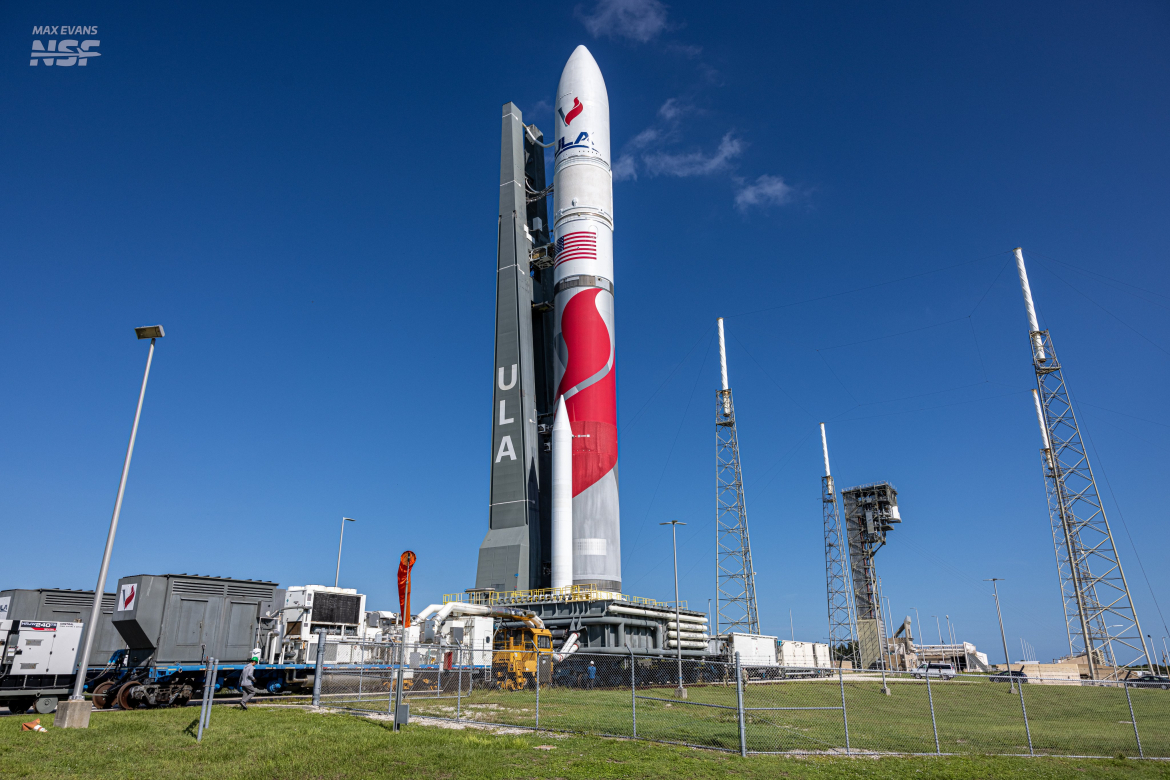
United Launch Alliance returned to the launch pad at Space Launch Complex 41 with its Vulcan rocket ahead of the vehicle’s second launch. ULA needs to successfully fly this second certification mission before it can begin launching national security payloads for the U.S. Space Force and the National Reconnaissance Office.
Liftoff of the mission dubbed Cert-2 is targeting Friday, Oct. 4, during a three-hour launch widow that opens at 6 a.m. EDT (1000 UTC). ULA completed stacking the rocket on Sunday, Sept. 21.
Following a stretch of dodgy weather caused by Hurricane Helene, Monday proved to be a sunny day, albeit hot and humid day on Florida’s Space Coast as the rocket emerged from the Vertical Integration Facility to begin the 550-meter (0.34 mi.) journey to the launchpad. First motion of the vehicle was clocked at 10:27 a.m. EDT (1427 UTC) with the rocket reaching its final destination, known as “hard down,” roughly an hour later.
After the Monday morning rollout, the 202-foot-tall (61.6 m) rocket will undergo a tanking test on Tuesday, called a wet dress rehearsal. When fully fueled, this variant of the Vulcan rocket, designation VC2S, weighs roughly 1.5 million pounds (663,000 kg).
There are no plans to conduct a static fire test of the two BE-4 engines on the base of the rocket prior to launch.
The mission will carry an inert payload, meaning nothing is designed to separate from the Centaur 5 upper stage of the rocket following the deployment of the payload fairings. During a June teleconference with members of the press, ULA President and CEO Tory Bruno mentioned that the Cert-2 flight will carry some experiments and technology demonstrations “that are relevant to technology development for future insertion into our Centaur 5 upper stage.”
“We’ll do some maneuvers with the upper stage just to full characterize the limits of what Centaur 5 can do. We’ll measure how it behaves relative to its cryogenics,” Bruno said during the June 26 teleconference. “Obviously, it’s a very long duration upper stage that’s required for these direct-injection, high-energy orbits, so it lasts a really long time. But as you know, as you might guess, we would never plan a mission and didn’t design it right to the wire of when we’d be out of propellant or when the boil off would consume and acceptable amount of propellant. We have some margins and setbacks from that, but this is an opportunity for us to get some really more direct measurements on how that boil off behavior happens. So, we’ll be measuring that, along with these maneuvers.
“We’ll also have experiments attached to this inert payload that will help us understand how to extend the duration of the upper stage and what the limits, practical limits to that might be in the future.”
Since then, Bruno and ULA have remained fairly quiet as to the specifics of those tech demos and experiments. In a tongue and cheek social media response to a question about the Cert-2 payload, Bruno simply said “Highly proprietary, secret sauce. It’s going to be awhile before we share more.”
ULA made the determination to not carry a customer payload onboard the rocket after Sierra Space let them know that their Dream Chaser spaceplane wouldn’t be ready for its planned launch to the International Space Station.
Like Northrop Grumman and SpaceX, Sierra Space is also part of the Commercial Resupplies Service 2 (CRS-2) contract with NASA. In a 2016 press release, Sierra Space said “Dream Chaser will provide a minimum of six cargo delivery missions to and from the ISS between 2019 and 2024.”
On Sept. 27, Sierra Space said it completed a test to verify that its Passive Common Berthing Mechanism (PCBM) met NASA’s standards to allow for a safe docking with the ISS. Earlier this month, it said its Shooting Star cargo module finished with its acoustic testing.
“Our innovative Shooting Star cargo module offers the capability to deliver additional capacity, flexibility and power to a wide range of missions,” said Sierra Space CEO, Tom Vice, in a statement. “In our first mission, Shooting Star will carry critical science, food and cargo to the International Space Station for NASA, and our cargo modules will continue to play an integral role in bringing supplies to space as we build a Low Earth Orbit economy through commercial spaceflight.”
The four-day test campaign was designed to ensure that it could “withstand the acoustic environment of a launch on a Vulcan Centaur rocket.”
Round two
Completing the Cert-2 mission is crucial to ULA. Not only will it allow the company to launch national security payloads using the Vulcan rocket, but it also strengthens their position to bid on future missions for NASA.
In a September 2024 interview with Ars Technica, Tim Dunn, the senior launch director at NASA’s Launch Services Program based at the Kennedy Space Center, said achieving a successful flight with Cert-1 “allowed them to be in a position to bid on our missions.”
“A second Cert flight that will then demonstrate a few other capabilities of the rocket allows more data for our certification team that is working in concert with the US Space Force’s certification team,” Dunn told Ars’ Stephen Clark. “We’re doing a lot of shared, intergovernmental collaborations in the certification work, so it allows us all more data, more confidence in that launch vehicle to meet all the needs that we believe we will have in the coming decade-plus.”
However, a successful second flight of Vulcan doesn’t automatically mean ULA gets to move to these important government missions. During an appearance at the Air, Space and Cyber Conference earlier this month, Space News reported that Brig. Gen. Kristin Panzenhagen, who serves as the executive officer for the U.S. Space Force’s Assured Access to Space program, said that “it’s not instantaneous that if they have a clean flight, they’re automatically certified.”
“We will have a lot of data to go through after that just to make sure that everything performed up to expectations. We will need some time after that to make sure that everything was clean,” Panzenhagen said. “We’re definitely looking forward to having them be completely certified, so we can start those national security space launches.”
During his comments in June, Bruno said they intended to launch USSF-106 and USSF-87 before the end of the calendar year. Both of the Vulcan rockets that will be used to support this mission were delivered to the Cape earlier this year before ULA sent its Rocketship barge off to get some work done at a dry dock.
As it awaits these future launches, ULA is also continuing work on its second VIF located at Cape Canaveral Space Force Station as well as the launch infrastructure at Space Launch Complex 3 (SLC-3) located at Vandenberg Space Force Base. Bruno said on social media that both assets will come into play in 2025.
Quelle: SN
----
Update: 4.10.2024
.
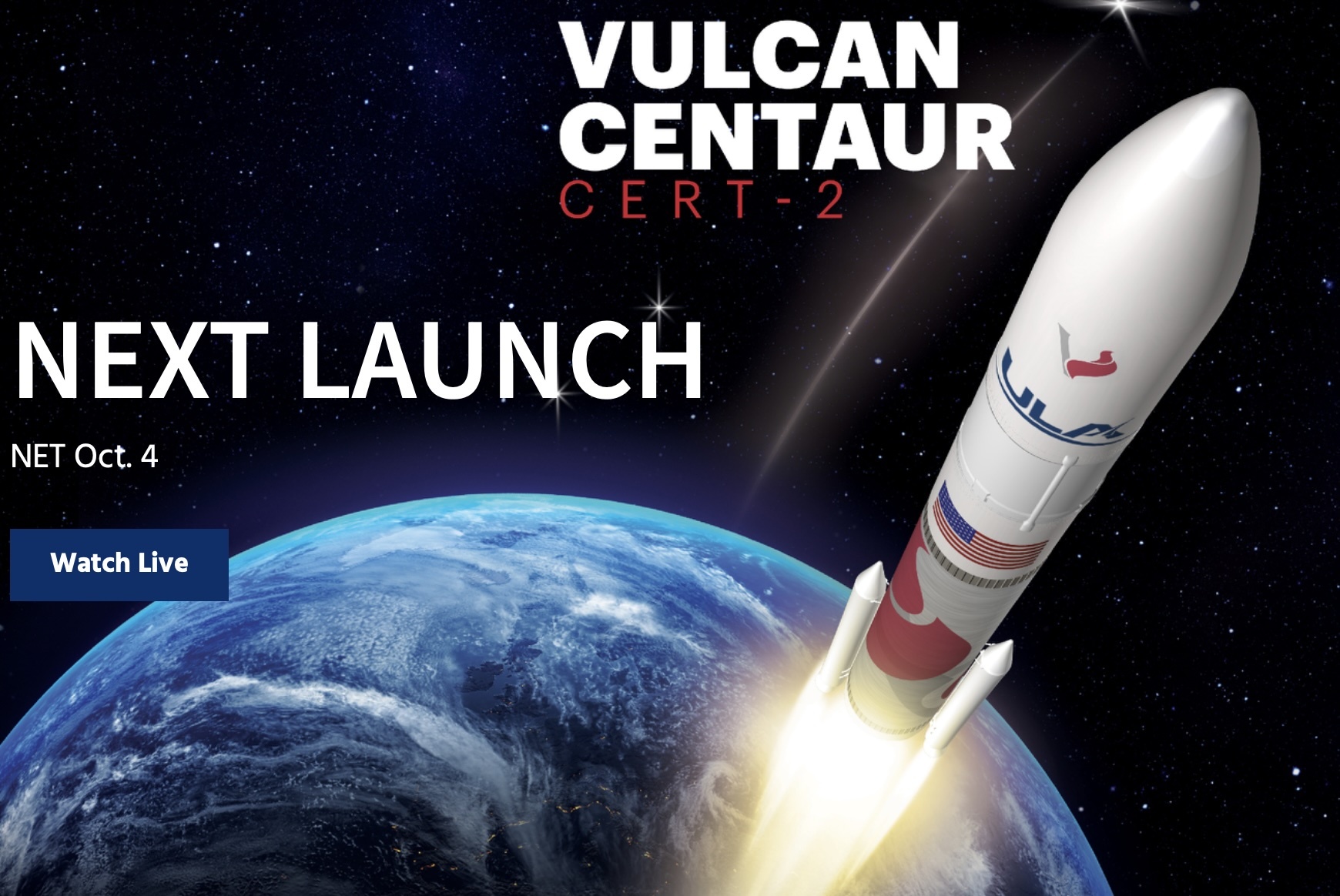
VULCAN TO LAUNCH SECOND CERTIFICATION MISSION (CERT-2)
A United Launch Alliance (ULA) Vulcan VC2S rocket will launch the second certification (Cert-2) mission from Space Launch Complex-41 at Cape Canaveral Space Force Station, Florida. The Cert-2 mission includes an inert payload and demonstrations associated with future Centaur V technologies. This is the second of two test flights required for ULA's certification process with the U.S. Space Force.
Launch Date: NET Friday, October 4, 2024 during a window of 6:00 to 9:00 a.m. EDT
GO Vulcan! GO Centaur! GO Cert-2!

The Launch Readiness Review (LRR) is GO for Friday's liftoff of the United Launch Alliance Vulcan rocket on the Certification-2 (Cert-2) flight test.
Liftoff is scheduled for 6:00 a.m. EDT (1000 UTC) from Space Launch Complex-41 at Cape Canaveral Space Force Station in Florida.
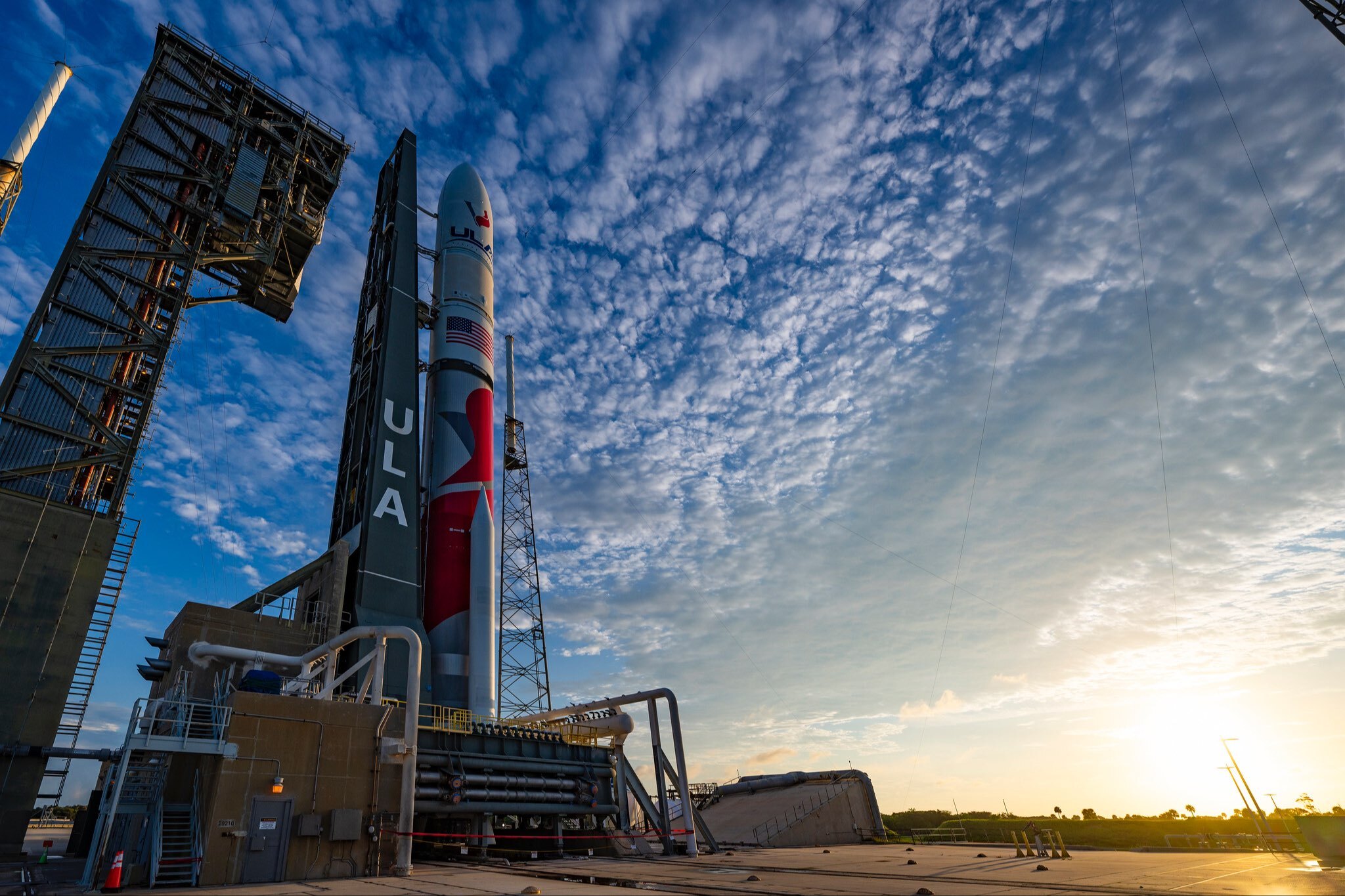
The LRR, led by ULA Launch Director Eric Richards, was completed this morning at the Advanced Spaceflight Operations Center (ASOC).
Leadership from ULA and the Space Force assessed the readiness of the rocket, payload and mission assets, discussed the status of pre-flight processing work, heard technical overviews of the countdown and flight, and previewed the weather forecast that projects a 75 percent chance of meeting the launch rules.
At the conclusion of the meeting, senior leaders were polled and gave a ready status for launch, then signed the Launch Readiness Certificate.
The Vulcan VC2S rocket, designated V-002, stands 202 feet (61.6 meters) tall and will launch an inert payload into deep space while fulfilling certification requirements with the Space Force to perform future national security missions.
ULA will offer live reports from launch control in our automatically refreshing blog beginning Friday at 12 midnight EDT (0400 UTC). The launch webcast starts at 5:40 a.m. EDT (0940 UTC).
Quelle: ULA
----
Update: 14:00 MESZ
.
Start von ULA Vulcan Rocket mit CERT2 Mission
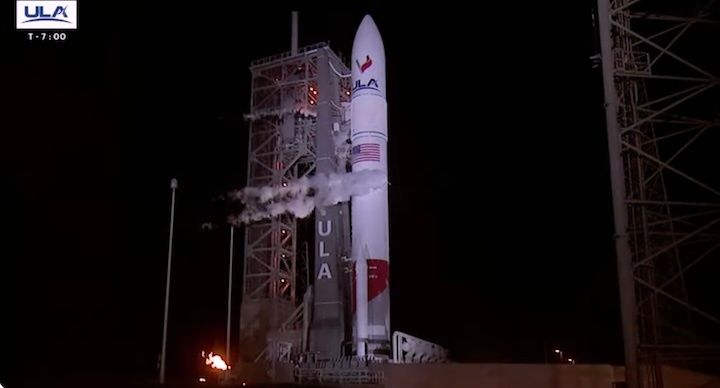
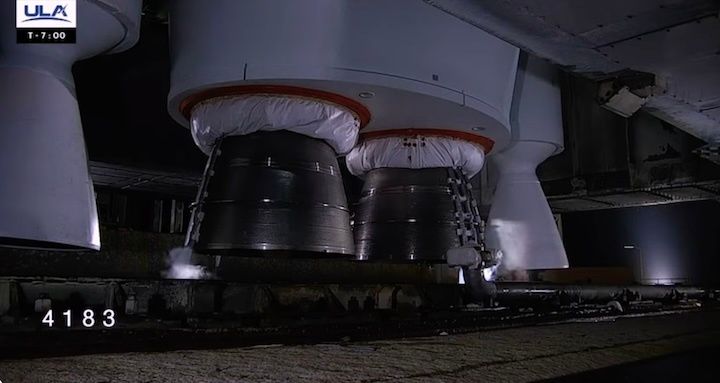
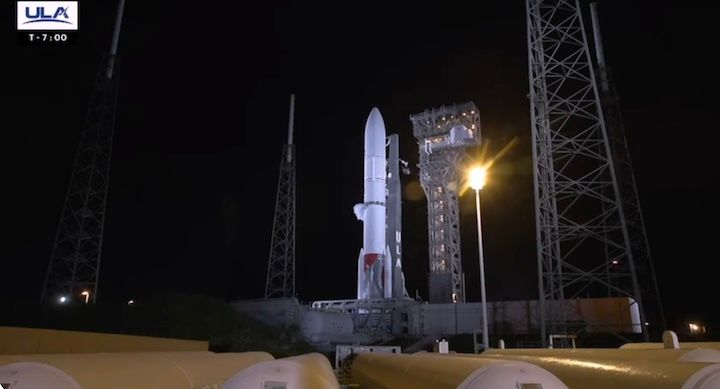
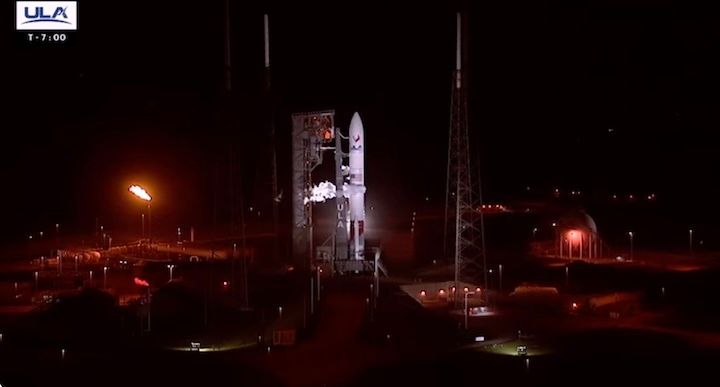
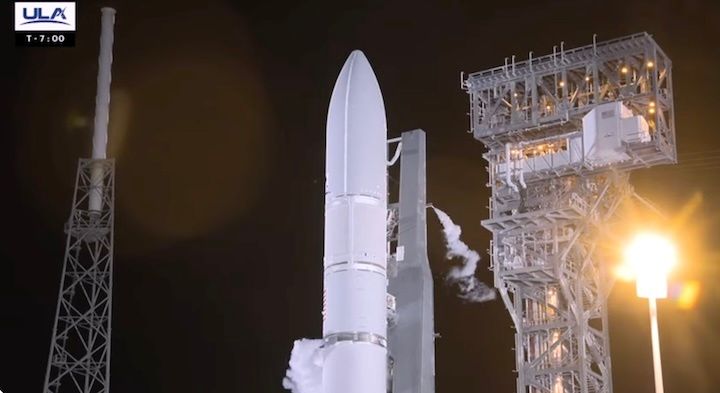
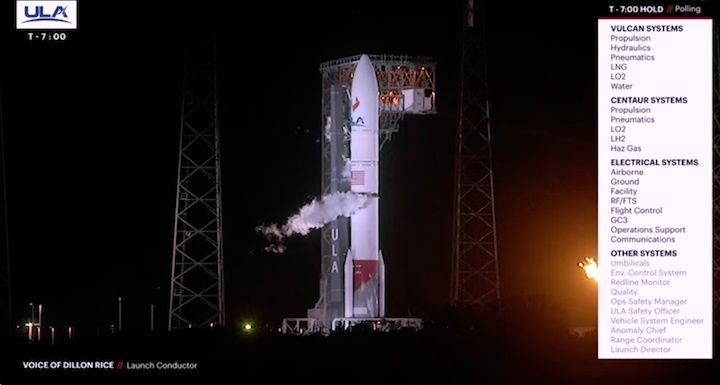
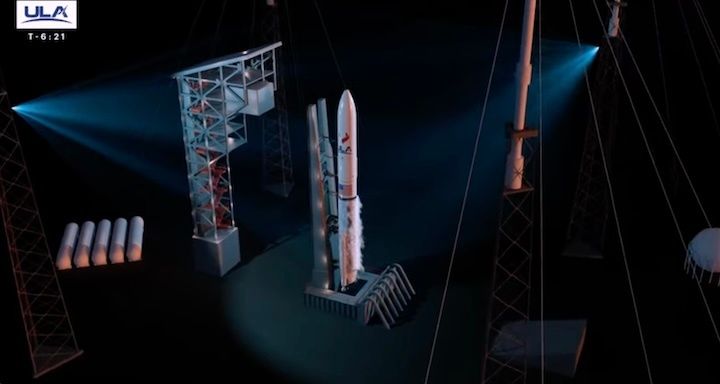
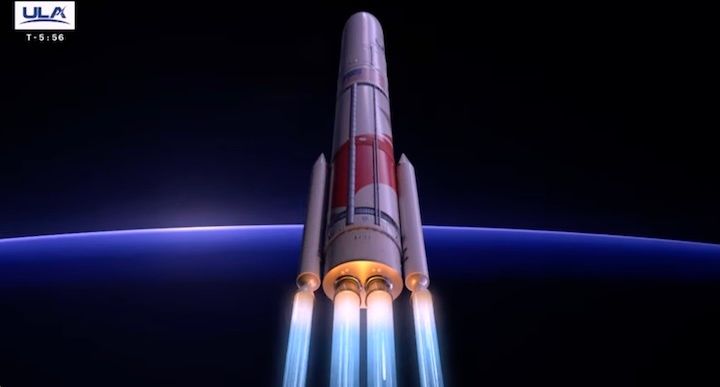
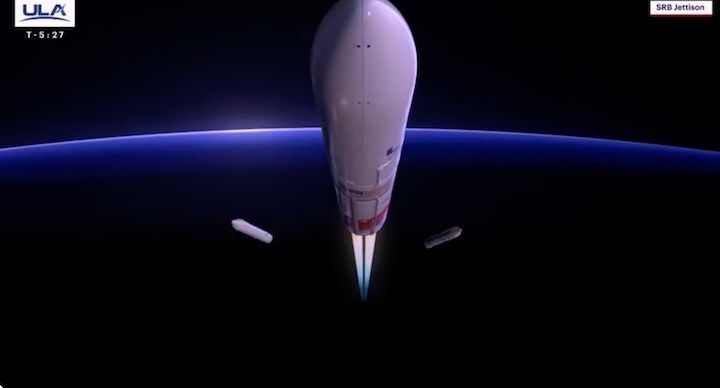
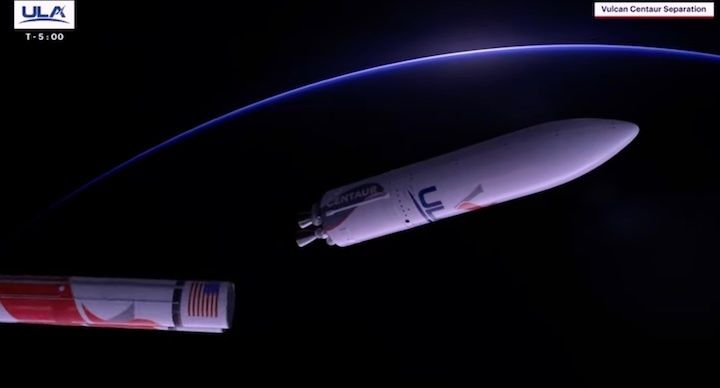
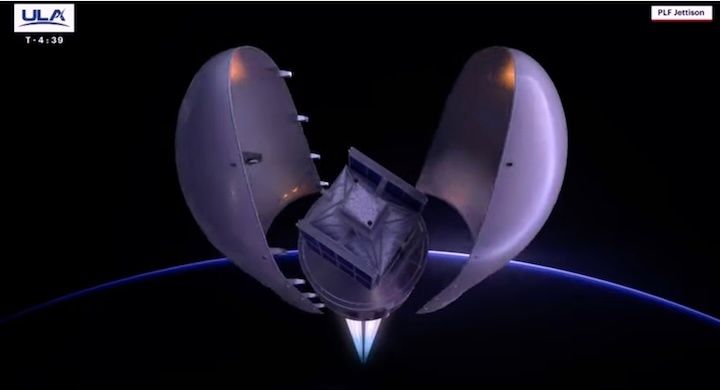
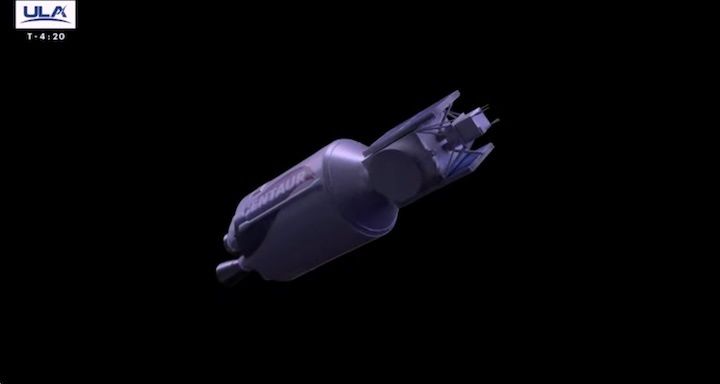
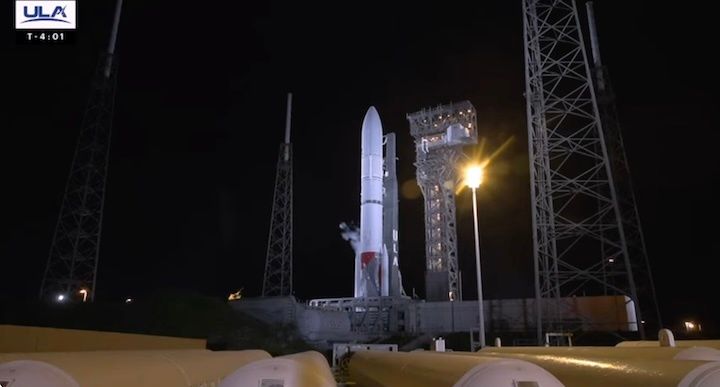
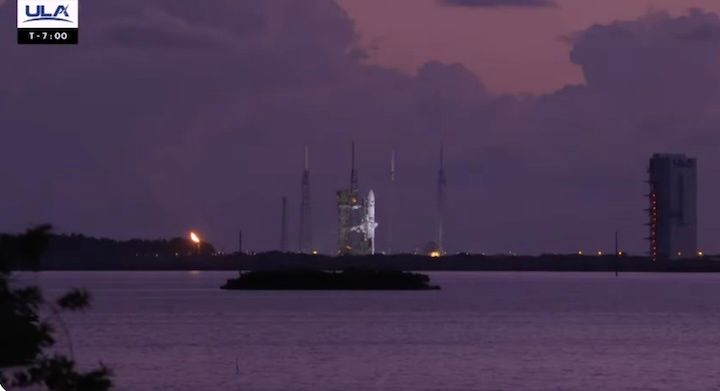
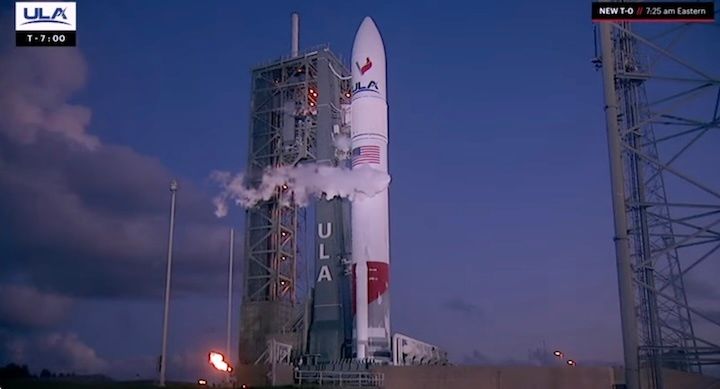
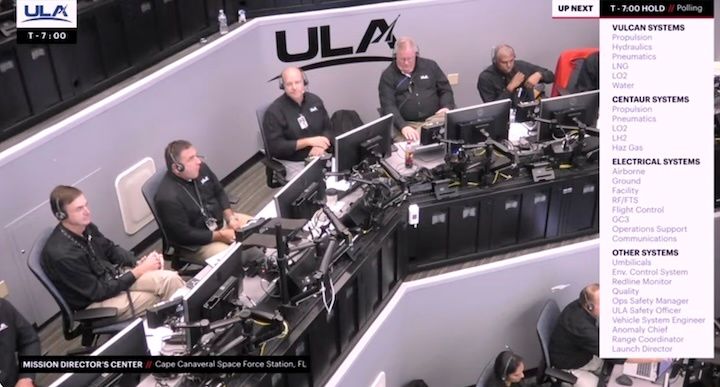

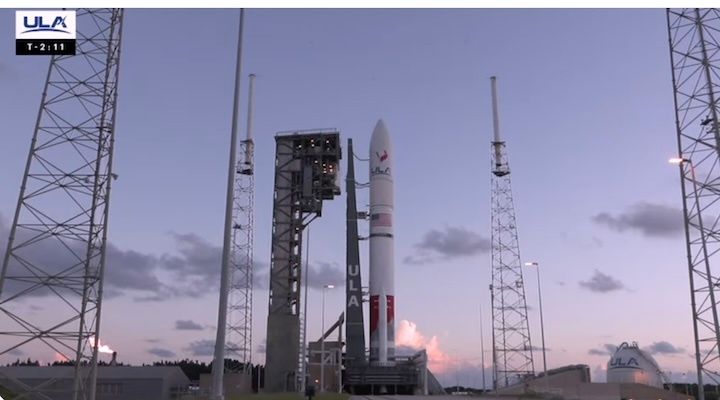
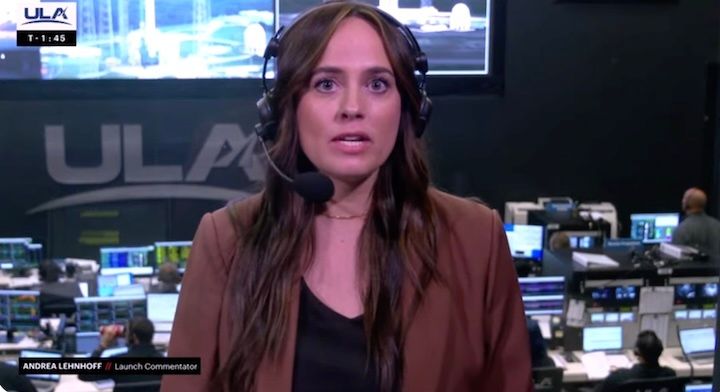
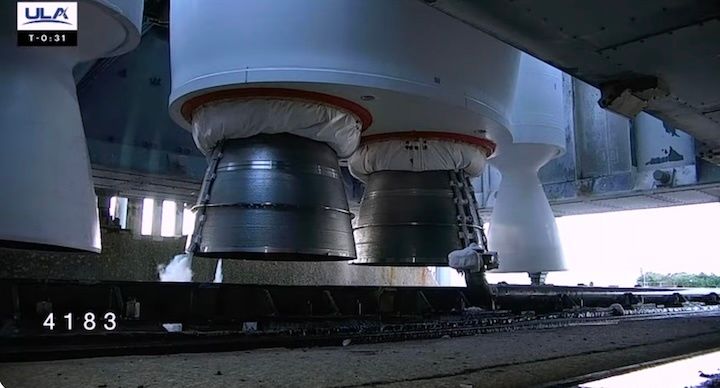
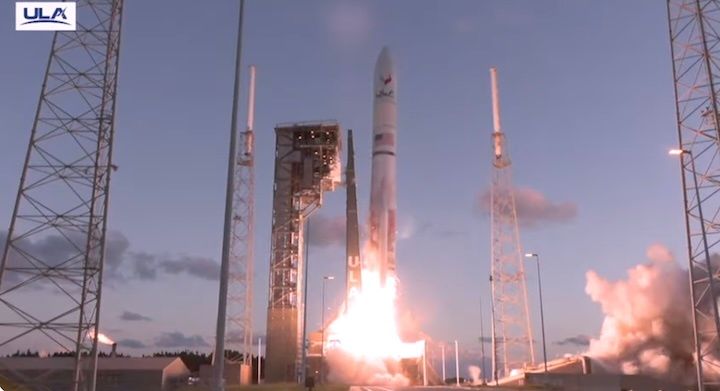

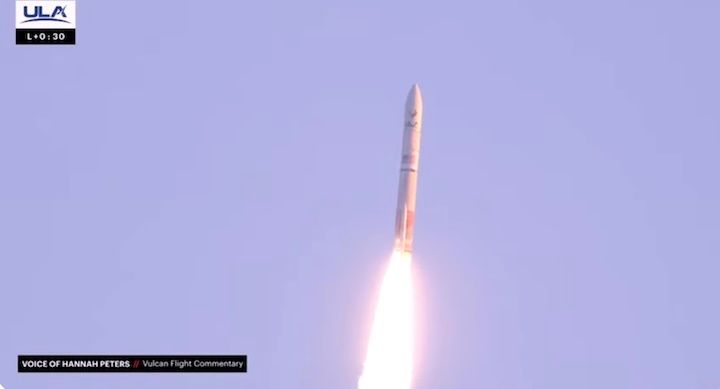
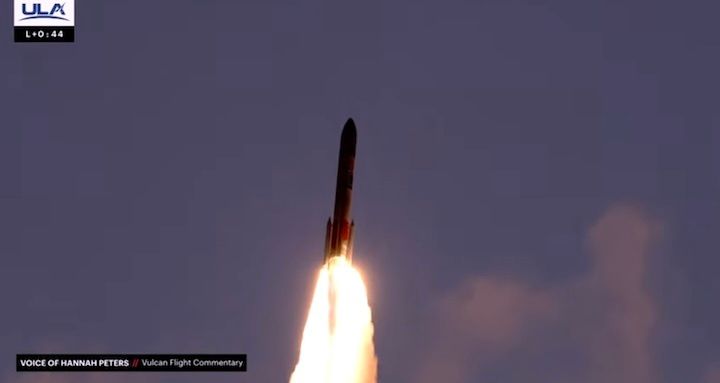
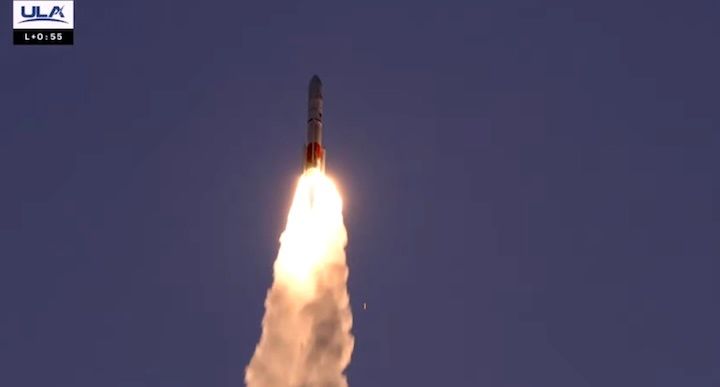
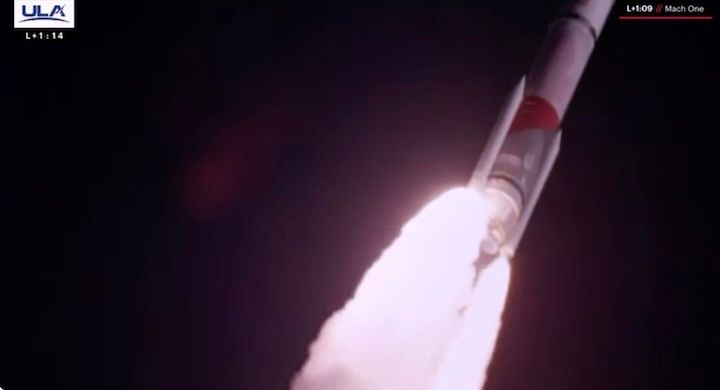
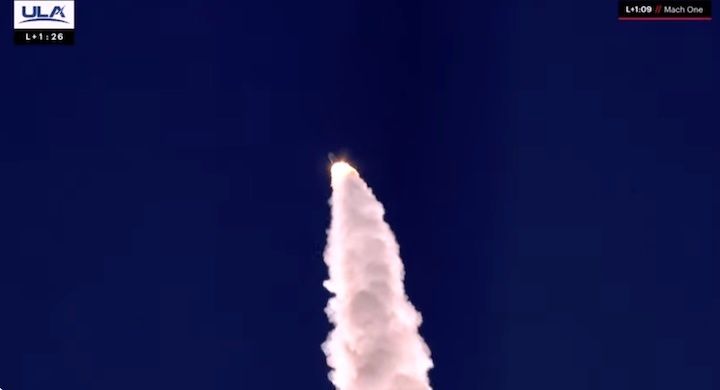

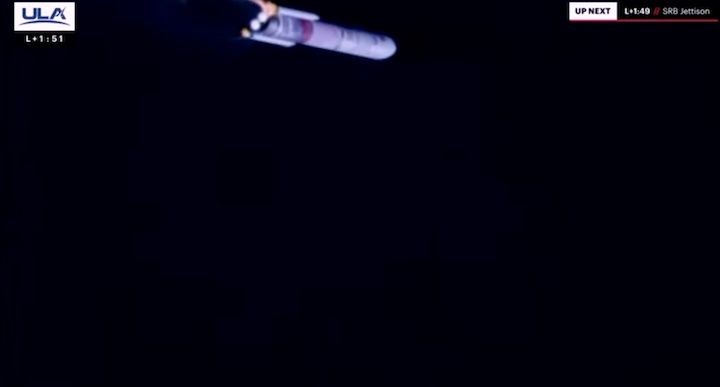
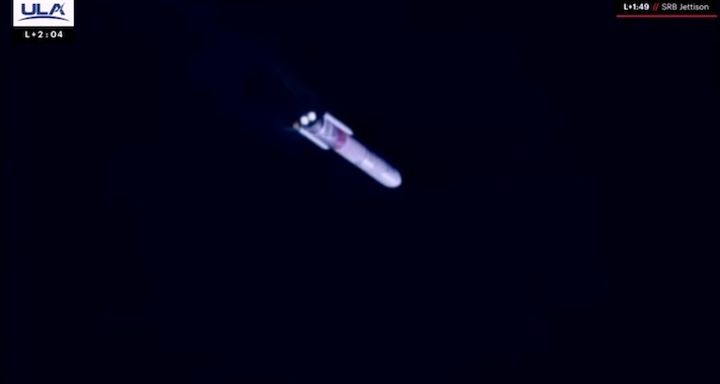


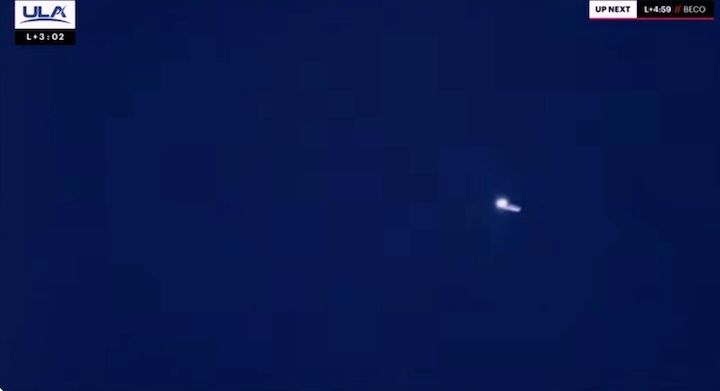
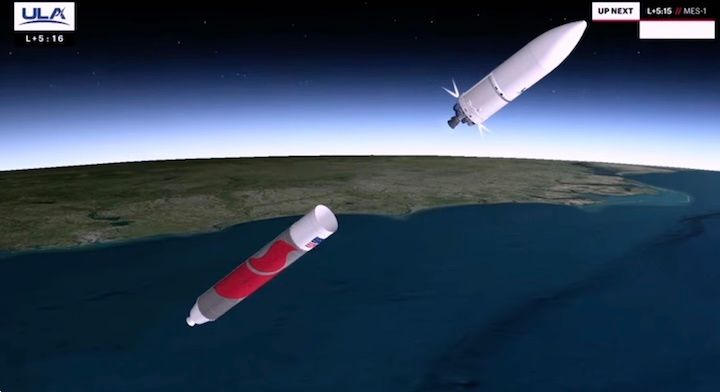
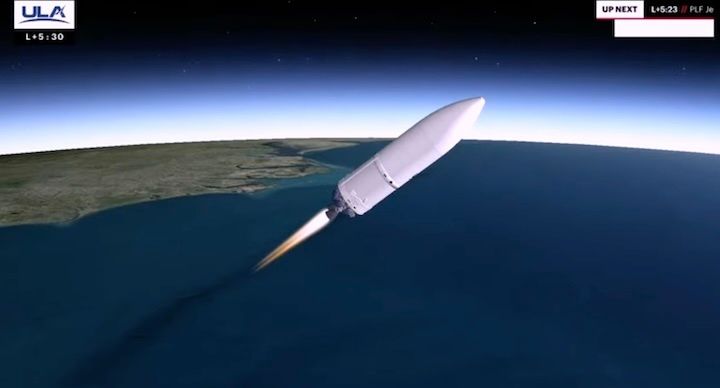
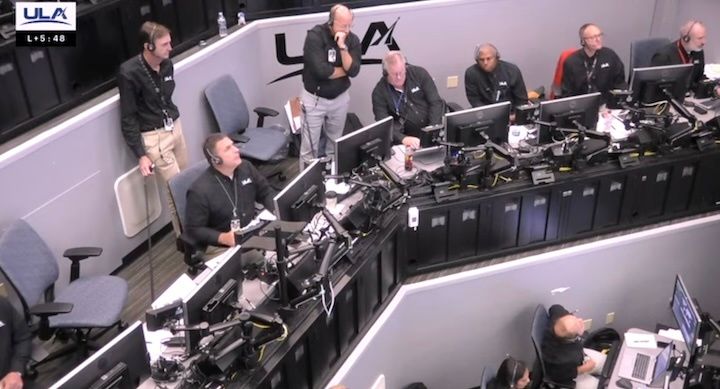
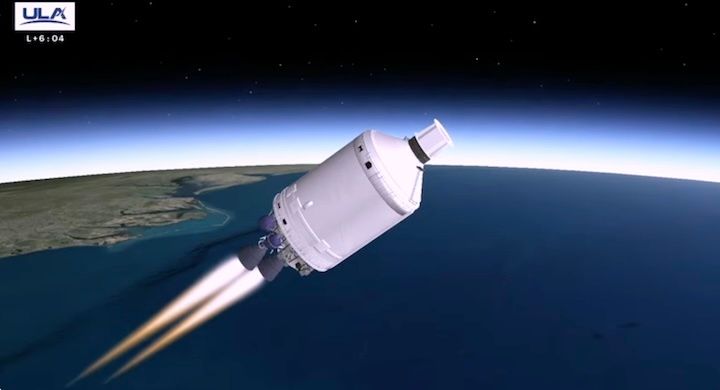
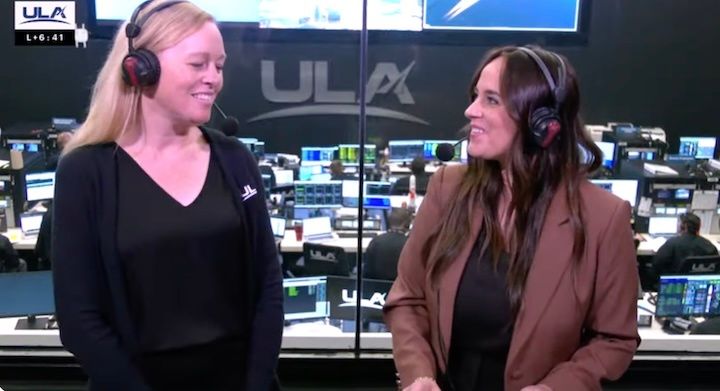

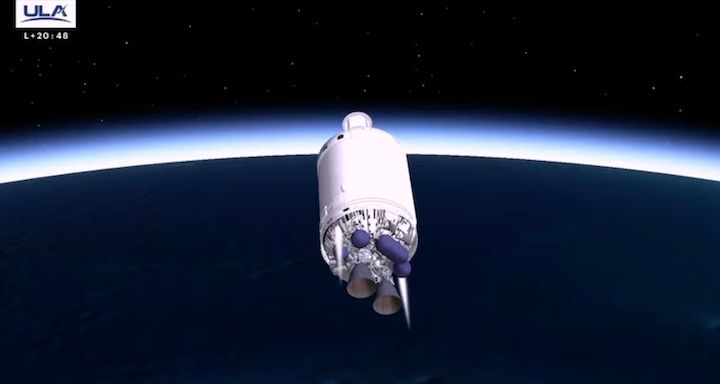


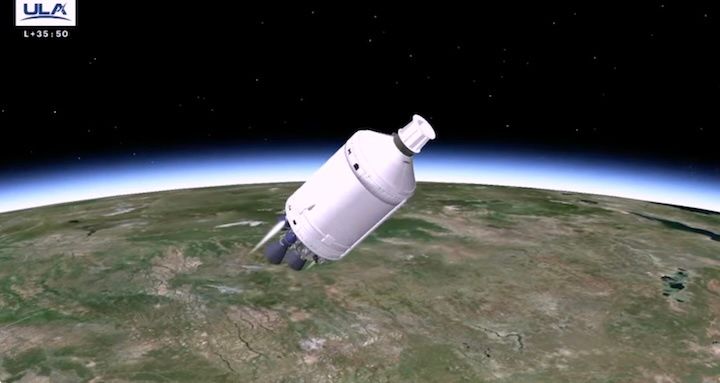
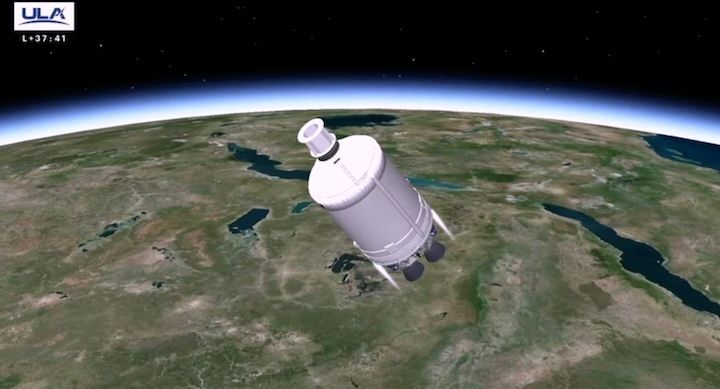
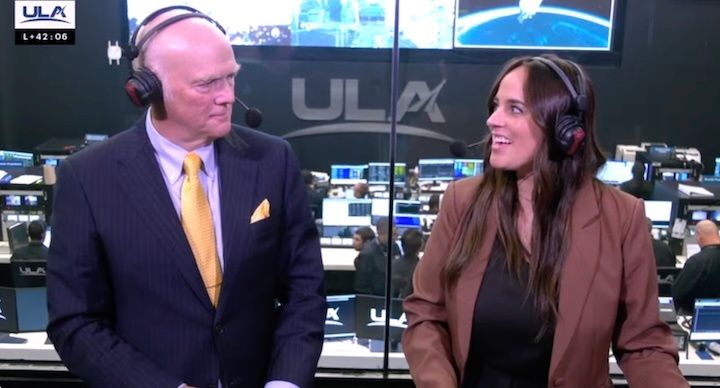
Quelle: ULA
